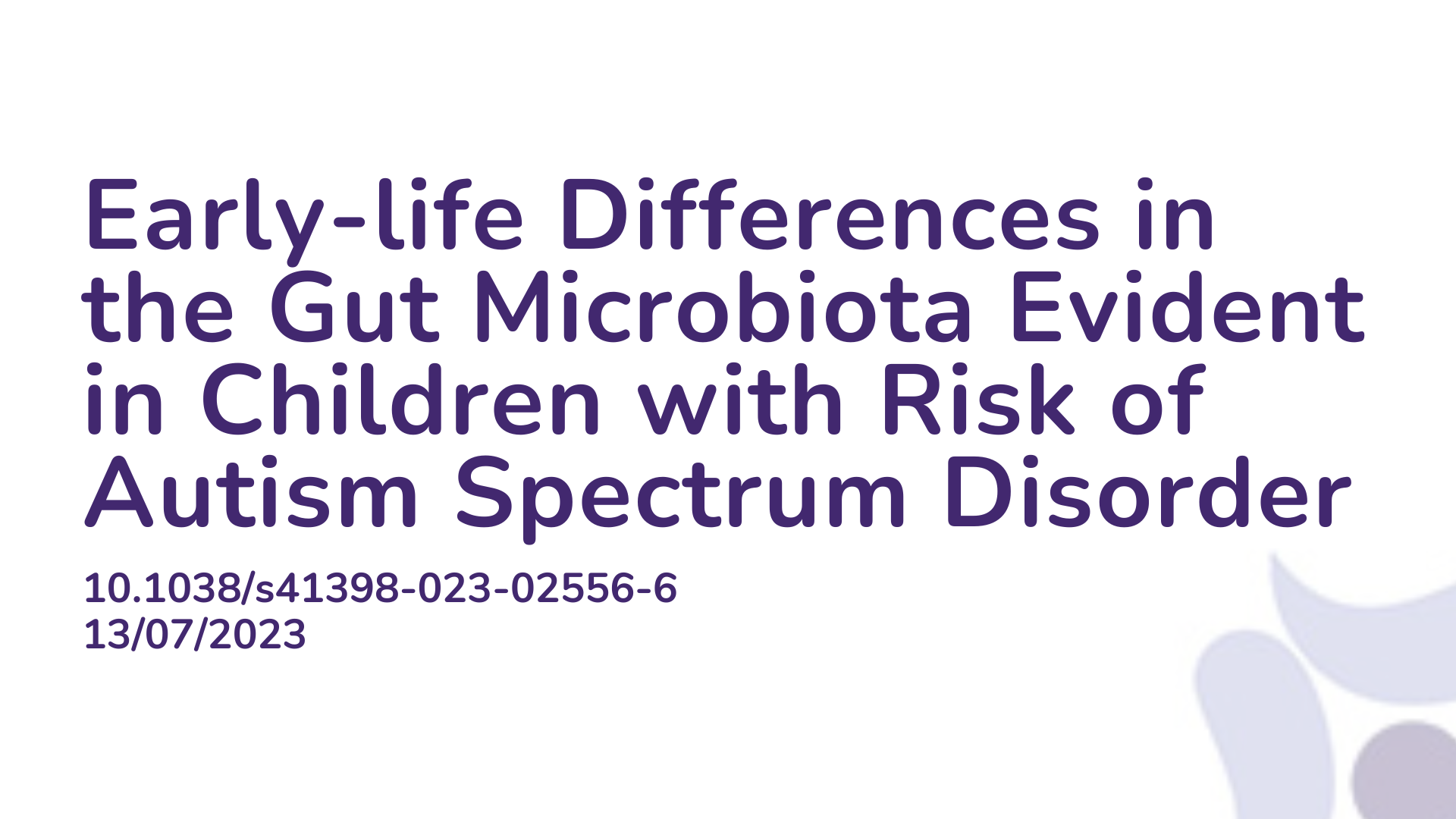Summary:
Autism Spectrum Disorder (ASD) is a neuro-developmental condition characterized by social communication difficulties, repetitive behaviors, and sensory atypicalities. ASD affects approximately 1% of the global population. Many individuals with ASD also experience gastrointestinal issues, along with sleep disorders, epilepsy, and anxiety. ASD is influenced by genetic and environmental factors such as the gut microbiota, which plays a crucial role in overall health. Multiple studies have reported alterations in the gut microbiota in individuals with ASD, such as reduced bacterial diversity and a lack of potentially beneficial bacteria like Bifidobacterium species. However, a consensus on the changes evident in the microbiota related to ASD is still lacking. This study explores how the microbiota develops in infants, both with and without a family history of ASD in order to assess whether there are any changes evident that might predict the onset of ASD. At 5 months of age, infants with an elevated likelihood of ASD showed lower levels of Bifidobacterium and higher levels of Clostridium and Klebsiella species. The analysis also revealed a correlation between levels of GABA, a neurotransmitter that calms the nervous system, and Bifidobacterium species. In summary, the study notes shifts in the gut microbiota composition among infants with a risk of ASD which are apparent before the onset of any ASD symptoms. These findings support the notion that the gut microbiota may play a role in predicting or shaping how ASD presents later in life.
Abstract:
Evidence from cross-sectional human studies, and preliminary microbial-based intervention studies, have implicated the microbiota-gut-brain axis in the neurobiology of autism spectrum disorder (ASD). Using a prospective longitudinal study design, we investigated the developmental profile of the fecal microbiota and metabolome in infants with (n = 16) and without (n = 19) a family history of ASD across the first 36 months of life. In addition, the general developmental levels of infants were evaluated using the Mullen Scales of Early Learning (MSEL) test at 5 and 36 months of age, and with ADOS-2 at 36 months of age. At 5 months of age, infants at elevated-likelihood of ASD (EL) harbored less Bifidobacterium and more Clostridium and Klebsiella species compared to the low-likelihood infants (LL). Untargeted metabolic profiling highlighted that LL infants excreted a greater amount of fecal γ-aminobutyric acid (GABA) at 5 months, which progressively declined with age. Similar age-dependent patterns were not observed in the EL group, with GABA being consistently low across all timepoints. Integrated microbiome-metabolome analysis showed a positive correlation between GABA and Bifidobacterium species and negative associations with Clostridium species. In vitro experiments supported these observations demonstrating that bifidobacteria can produce GABA while clostridia can consume it. At the behavioral level, there were no significant differences between the EL and LL groups at 5 months. However, at 36 months of age, the EL group had significantly lower MSEL and ADOS-2 scores compared to the LL group. Taken together, the present results reveal early life alterations in gut microbiota composition and functionality in infants at elevated-likelihood of ASD. These changes occur before any behavioral impairments can be detected, supporting a possible role for the gut microbiota in emerging behavioral variability later in life.
Article Publication Date: 13/07/2023
DOI: 10.1038/s41398-023-02556-6



